How To Great Pictures From Milky Way Galaxy
Milky Way Photos Must Do One Thing First: Stun. In This Article, We Will Teach You How To Photograph The Milky Way.
Milky Way Galaxy, When the viewer’s gaze is lost in the grandeur of the photograph and he begins to dream, it can be said that the photographer has achieved his goal.
The Milky Way, our galaxy, has been a hot topic for photographers, romantics, and scientists for thousands of years.
The word “galaxy” itself refers to the long history of astronomy, which is derived from the Greek word “gála” meaning “milk (edible)”. The ancient Greeks believed that a kind of divine lion floated in the sky.
In 1609, a scientist named Galileo Galilei was the first to notice countless Milky Way stars. Astronomers estimate that about 100 to 300 billion stars are twinkling in the galaxy.

Sony a7S + Zeiss Batis 18mm 2.8 | Tracking with Fornax Mounts LighTrack | f / 3.5 15 X 90 Sec ISO 800
In this article, we will teach you tips on how to prepare for Milky Way photography.
A place without light pollution
The phrase “light pollution” is somewhat misleading; Because pure light is not polluted, and light pollution means light that pollutes the darkness of night. Light pollution is one of the major obstacles in astrophotography; Because the sky without light pollution is the most important prerequisite for impressive observation and recording through the Milky Way.
The light of big cities can be a big problem in this process; Therefore, if you live in a big city, it will be very difficult to see the night sky and the Milky Way galaxy.
Therefore, it is better to leave the city and choose the darkest possible place. Use the online ” Light Pollution Map ” to determine the amount of light pollution in your area.

This color map specifically shows areas where light pollution is high or low. In general, in large forests or mountainous areas, or areas with low populations, light pollution is low and can be photographed milk easily. This map will help you find the best place to view the Milky Way.

Sony a7 III + ZEISS Batis 18mm f / 2.8 | Fornax Mounts LighTrack | f / 2.8, 25 Sec (Half Mode) ISO 2400 | Time and phases of the moon and the weather
Time
The most prominent part of the Milky Way galaxy can be seen in March and September. This is especially true for the northern celestial sphere, whose height from the horizon depends on the latitude and longitude of the region. Summer is the best time to see the Milky Way; Because it then stretches from north to south. Along the Milky Way belt, the constellations Perseus, Cassiopeia, Swan, Eagle, and Sagittarius are also seen in this chapter.
Month
The position of the moon and its position in the night sky are of fundamental importance. If the moon is close to the Milky Way galaxy, it is difficult to detect; Because moonlight illuminates the environment too much. The best conditions are when the moon is not above the horizon or the full moon.
If the moon is behind you, you are in a good position to take pictures; That is, it is exactly opposite the Milky Way in the sky. In this case, you can use the moonlight to brighten the environment; But make sure the moon is not full, which is usually very bright. Where the moon is in the sky and which phase of the moon dominates at that moment can be easily found with the help of programs such as Stellarium, Planit for Photographers, and PhotoPills.
weather
In addition to this very accurate information, you should always keep a close eye on the weather. For example, heavy rain and black clouds make the best of the worst for photography. The astronomical photographer only takes pictures when the sky is clear, which is abbreviated to CS (Clear Sky). You can get the latest data from the Internet; For example, in Clear Outside and Meteoblue, you can get useful, safe, and concise information.
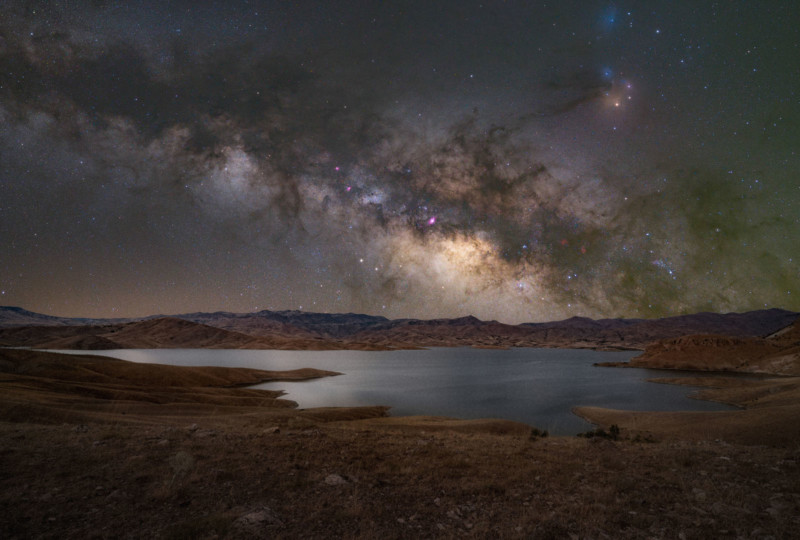 The Milky Way Above Dersim in Turkey Sony a7 III + ZEISS Batis 18mm f / 2.8 | Fornax Mounts LighTrack |: The photo contains two layers: 1. Background: f / 8 15 sec ISO 200; ۲. Background: f / 3.5 2 x 90 sec ISO 1200.
The Milky Way Above Dersim in Turkey Sony a7 III + ZEISS Batis 18mm f / 2.8 | Fornax Mounts LighTrack |: The photo contains two layers: 1. Background: f / 8 15 sec ISO 200; ۲. Background: f / 3.5 2 x 90 sec ISO 1200.
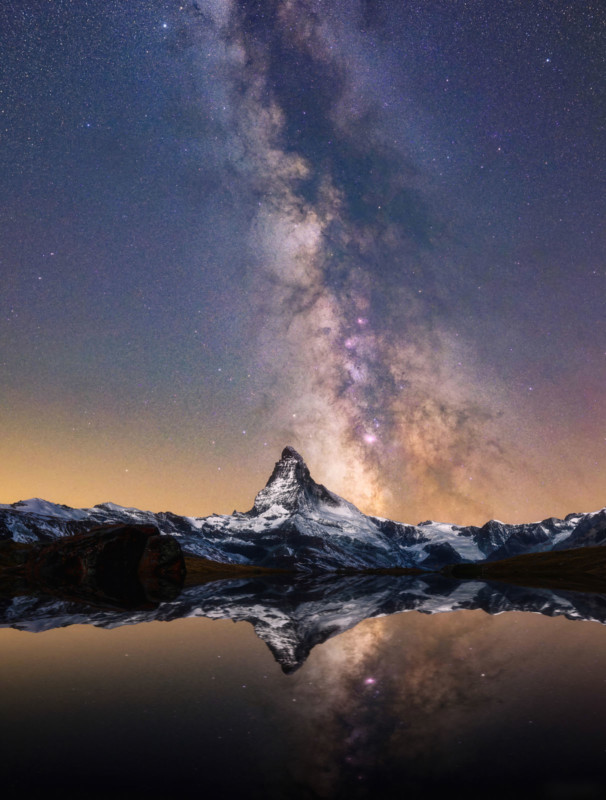
Matterhorn. Altitude 1.5 meters above sea level and one of the high mountains of the Alps. Matterhorn is one of the most famous mountains in the world due to its distinctive shape and history of mountaineering. Sony a7 III + ZEISS Batis 18mm f / 2.8 | Fornax Mounts LighTrack | The image consists of two layers: Background: f / 11 2.5 seconds ISO 400; ۲. Background: f / 3.5 4 60 60 seconds ISO 800.
Equipment
Camera

In this type of photography, you will work with ISO; Therefore, the camera must have good noise performance. The less noise, the more detail is preserved later.
You can also use Astro cameras that do not filter red light. DSLR and DSLM cameras have a drawback when they leave the factory: they have very little sensitivity in the H-alpha spectral line, which is important in astronomy.
These cameras are equipped with an infrared (IR) filter at the factory, which suppresses the red spectral range; Therefore, light from red hydrogen nebulae does not enter the sensor; Because they are removed with the filter in the camera to provide the right color balance for everyday photography.
By removing this built-in IR filter, the sensitivity in the H-Alpha red range is dramatically increased and the camera becomes an Astro camera.
Wide-angle lens
You need a fast wide-angle lens to capture as much of the night sky as possible on the image sensor. Due to the rotation of the earth, the stars wander in the night sky; Therefore, the camera’s exposure time is limited to avoid star traces. A wide-angle lens provides relatively longer visibility in addition to the larger portion of the Milky Way.
The shorter the focal length, the longer it will be exposed. The same principle applies to the diaphragm; That is, the smaller the number f, the more light can fall on the sensor; So you can keep the exposure time shorter.
Tripod
To get the clearest possible images of stars, a strong, wind-resistant tripod for 30 seconds or more is essential. It is also a good idea to use a remote shutter to prevent the camera from shaking when you touch it to release the shutter. However, this is not necessary; Because almost every camera has a timer and you can use it for this purpose.
Headlamp
Ideally, we should be able to work with our photography equipment like a blind person and even make important adjustments in the dark and with the brightness of the camera screen down. To get to the place of photography or for more actions in that place, we need a headlamp that also has a red light mode; Because red light rarely affects our eyes.
If you use an ordinary flashlight, after each use up to 2 0 minutes is necessary to take our eyes to adapt to the dark again.
Automatic cable and timer and remote shutter release button
We need a cable or remote shutter to take a clear picture in the long light of the night sky. An alternative and sometimes much more practical method are to use a camera timer with a delay of two or ten seconds.
Accessories and clothes for astrophotography
Carry spare batteries, especially on cold nights, not in your backpack, but somewhere close to your body, such as a clothing pocket, so that they do not empty quickly and do not disappoint yourself. Also bring extra memory cards and equipment for cleaning camera and lens accessories and warm, waterproof clothing.
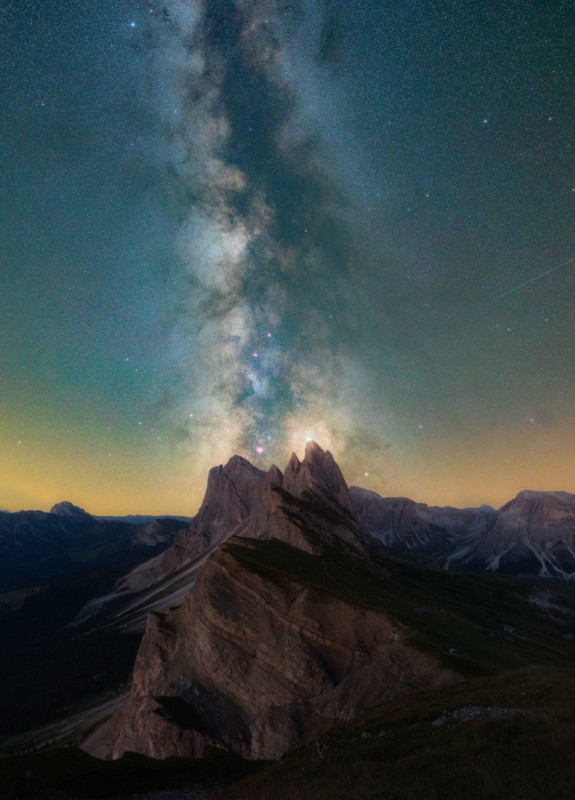
secede dolomite. Sony A7 III + Zeiss Batis 18mm F / 2.8 | Fornax Mults Lightrack | The image consists of two layers: Background: F / 2.8 2 x 90 SEC ISO 800
Programs and software
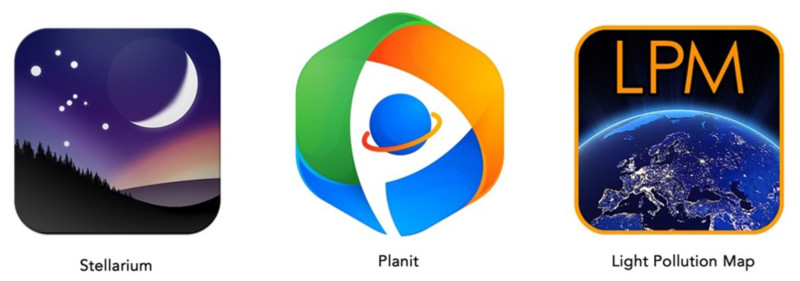
You can use the Stellarium app, a popular planetary observation app, for better images or orientation. A Stellarium is a map of the sky that shows exactly what you can see if you look at the sky.
Stars, constellations, planets, comets, satellites (such as the ISS ), and other objects in the deep sky are displayed in the sky in just a few seconds by tapping the phone screen. In addition to using it on your smartphone, you can use the desktop version and its website.
PhotoPills is also recommended for Milky Way and night sky photography, which is one of the top photography programming programs on the market.
This program has many features that allow you to take photos at a specific time and place on the ground and get the important information you want; These include the time of sunset and sunrise, the phases of the moon, the important clocks in photography (Blue & Gold), the formation of the Milky Way galaxy, and the location of the sky.
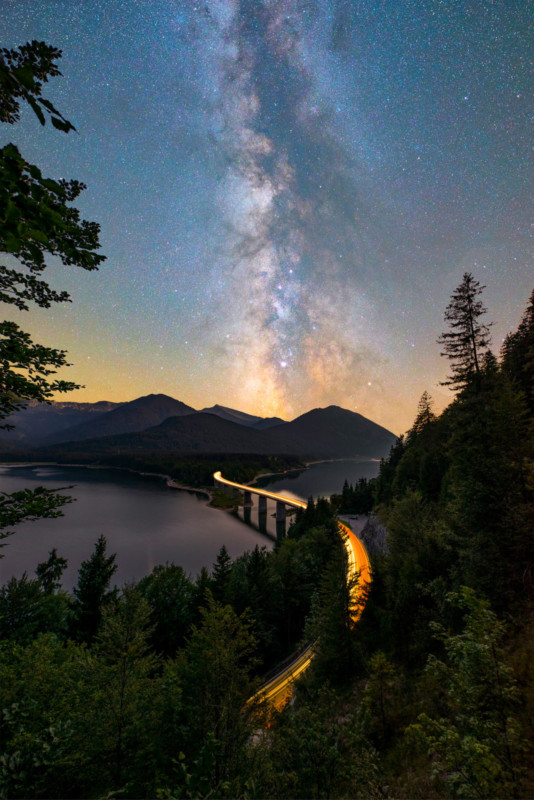
Nova. Sony a7 III. ZEISS Batis 18mm f / 3.5, 15 sec, ISO 3200











